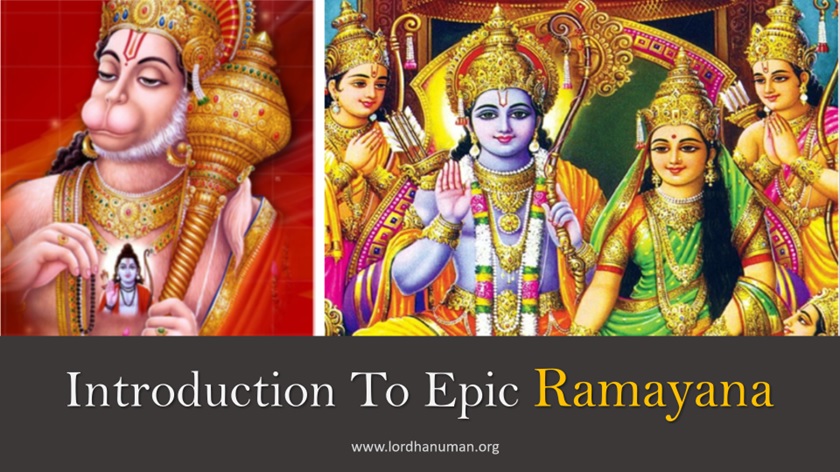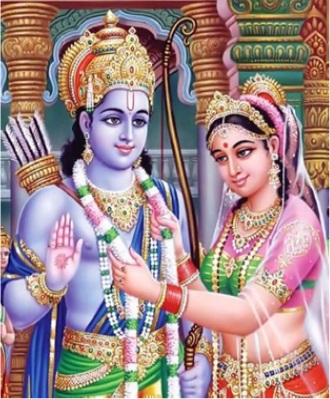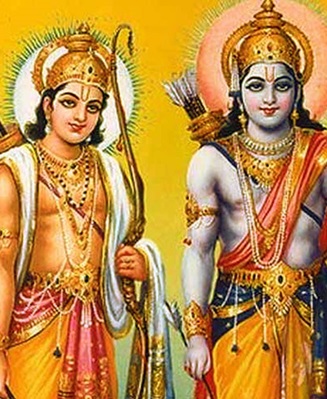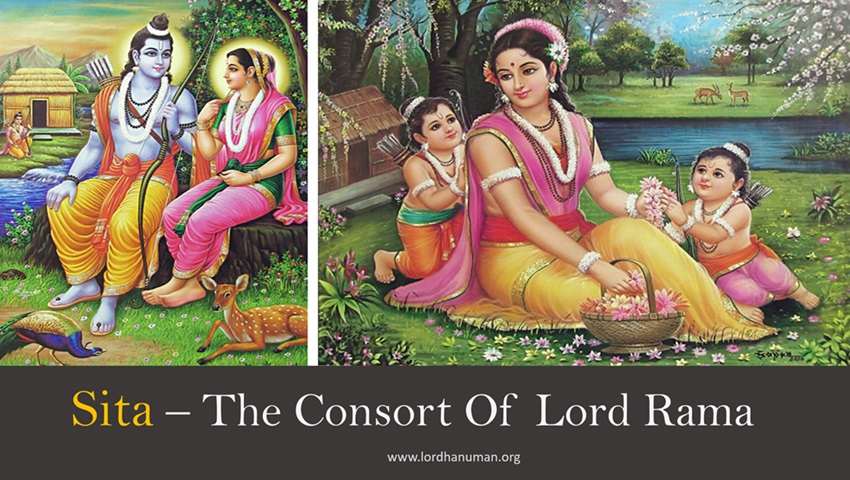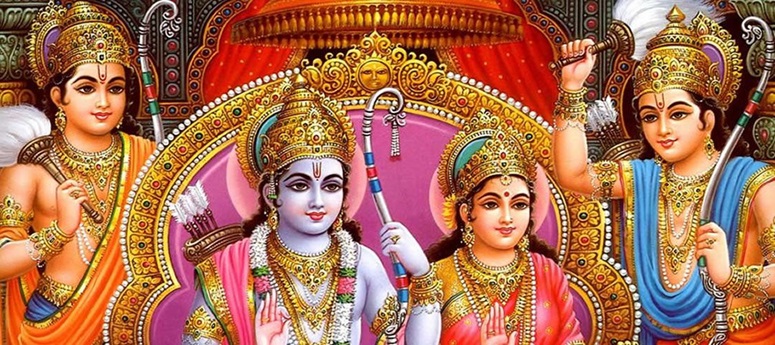
Ramayana
Ramayan
रामायण
Ramayana By Sage Valmiki
Ramayana, By Sage Valmiki, Is An Ancient Indian Epic That Narrates The Divine Journey of Lord Rama To Rescue Sita From Demon King Ravana.
Ramayana Brief Introduction
The Ramayana, written by Maharshi Sage Valmiki, is an ancient Indian epic that narrates the actual historic events and divine journey of Lord Rama. It’s a captivating narrative filled with profound moral and spiritual lessons.
The epic unfolds the life of Lord Rama, his unwavering commitment to dharma (righteousness), and his quest to rescue his beloved wife Sita from the demon king Ravana.
With its rich characters, timeless themes, and cultural significance, the Ramayana remains a revered scripture and a source of inspiration for millions, transcending boundaries of time, culture, and geography. It is a repository of moral wisdom, devotion, and ethical values, cherished by Hindus and admired worldwide.

Hanuman, a central figure in the Ramayana, symbolizes unwavering devotion, loyalty, and selfless service. As Lord Rama’s devoted ally, he plays a pivotal role in the rescue of Sita, showcasing his unmatched strength, intellect, and humility.
Hanuman‘s leap to Lanka, burning of the city, and retrieval of the Sanjeevani herb highlight his pivotal contributions. His devotion and exemplary character make Hanuman a timeless symbol of devotion, selflessness, and the triumph of good over evil, leaving an indelible mark on Hindu mythology and emphasizing the enduring values of righteousness and service.

Ramayana By Sage Maharshi Valmiki
The Ramayana is one of India’s most revered and cherished epics, a timeless narrative that has captivated generations with its profound moral and spiritual teachings. Attributed to the sage Valmiki, the Ramayana is a magnificent story that unfolds the life of Lord Rama, his divine journey, and the profound lessons it imparts.
The word “Ramayana” is derived from two Sanskrit words: “Rama,” the central character and seventh avatar of Lord Vishnu, and “ayana,” which means “journey” or “path.” The Ramayana is, therefore, the “Journey of Rama.”
The Ramayana is based on actual historic events. This epic has been passed down through generations, captivating hearts and minds with its profound themes, rich characters, and captivating adventures.
Ramsetu Bridge To Lanks

Lord Rama Marching To Lanka

The Ramayana, with its various Kandas (books) and chapters, is divided into seven sections, each focusing on a particular phase of Lord Rama’s life. It is a repository of moral, ethical, and philosophical wisdom, offering lessons on dharma (righteousness), loyalty, devotion, and the eternal struggle between good and evil.
At its core, the Ramayana is not just a heroic tale; it is a profound spiritual journey that transcends the boundaries of time, culture, and geography. Its influence extends beyond India’s borders, touching the hearts and minds of people worldwide.
The Ramayana continues to inspire and guide individuals in their quest for truth, righteousness, and inner harmony. It is a testament to the enduring power of good over evil and the ultimate triumph of dharma. ‘everlasting,’ ‘perpetual,’ ‘permanent,’ ‘primeval,’ and ‘ancient. ‘ Dharma can mean ‘law,’ ‘duty,’ ‘righteousness,’ ‘virtue,”morality,”religion,’.’ ‘morality,’ ‘religion,’ .
Origins Of Ramayana
The Ramayana, one of the most revered and ancient epics in the world, has its origins deeply rooted in Indian culture and spirituality. The epic is attributed to the sage Valmiki, a celebrated poet, and sage who lived over 2,500 years ago. Valmiki’s poetic brilliance and profound spiritual insight led to the creation of this magnificent narrative.
The Ramayana story revolves around the life of Lord Rama, the seventh avatar of Lord Vishnu, and his divine journey. It is written in Sanskrit and is divided into seven Kandas or books, each dedicated to a specific phase of Rama’s life.
Valmiki’s composition of the Ramayana is often considered a divine revelation, and it is regarded as one of the Adi Kavyas, or the first poems, in Sanskrit literature. The epic is a magnificent fusion of history, mythology, philosophy, and spirituality.

The Ramayana is more than just a narrative; it is a spiritual and moral guide. It imparts invaluable lessons in dharma (righteousness), karma (action), and devotion. The story of Lord Rama, his exile to the forest, the abduction of his wife Sita by the demon king Ravana, and the epic battle that ensued serve as a source of inspiration and guidance for people of all ages.
Over the centuries, the Ramayana has transcended geographical boundaries and cultural differences, captivating hearts and minds across the world. It continues to be a source of cultural and spiritual significance, reinforcing the timeless values of truth, duty, and righteousness. The Ramayana’s enduring legacy is a testament to its profound impact on humanity.
Key Characters In The Ramayana
The Ramayana features a rich tapestry of characters, each contributing to the story’s depth and complexity. Here are some of the key characters:

Vibhishana was Ravana’s younger brother who defects to Rama’s side and provides invaluable information and advice to Rama’s army that proved crucial in winning the final battle.
7 Kandas Of Ramayana
The Ramayana is divided into seven Kandas, each with its unique narrative and significance. The Ramayana comprises seven books, or Kandas, each dedicated to distinct phases of Lord Rama’s life and his adventures. These Kandas are named Balakanda, Ayodhyakanda, Aranyakanda, Kishkindhakanda, Sundarakanda, Yuddhakanda, and Uttarakanda.

Balakanda describes Rama’s birth and early life, as well as his exile to the forest. Ayodhyakanda narrates life in Ayodhya, Sita‘s abduction, and Rama’s efforts to rescue her. Aranyakanda details their forest exile, encounters with sages and demons.
Kishkindhakanda covers Rama’s alliance with monkey king Sugriva. Sundarakanda tells of Hanuman’s journey to Lanka. Yuddhakanda focuses on the epic battle with Ravana, and Uttarakanda concludes the epic with Sita’s banishment and their eventual reunion.
7 Kandas Of Ramayana
- Bala Kanda.
- Ayodhya Kanda.
- Aranya Kanda.
- Kishkindha Kanda.
- Sundara Kanda.
- Yuddha Kanda.
- Uttara Kanda.
रामायण के 7 कांड
- बालकाण्ड
- अयोध्याकाण्ड
- अरण्यकाण्ड
- किष्किन्धाकाण्ड
- सुन्दरकाण्ड
- युद्धकाण्ड
- उत्तरकाण्ड
This seven-part structure provides a comprehensive narrative of Lord Rama’s life, his trials and tribulations, and his unwavering commitment to dharma. Each book explores different facets of morality, duty, and the eternal battle between good and evil.
The Ramayana has been highly influential in shaping the cultural and moral fabric of Hindu society, and its teachings continue to resonate with people across generations.
1. Balakanda
The Book of Childhood In Ramayana
2. Ayodhyakanda
The Book of Ayodhya In Ramayana
This kanda describes Lord Rama’s exile to the forest due to his stepmother Kaikeyi’s wishes. Rama, along with Sita and Lakshmana, spends 14 years in the forest as hermits. This section delves into the life in Ayodhya, the abduction of Sita by the demon king Ravana, and Lord Rama’s efforts to rescue her.
3. Aranyakanda
The Book of the Forest In Ramayana
The narrative shifts to the forest, where Rama, Sita, and Lakshmana spend their exile. It introduces various sages, demons, and allies who play a pivotal role in the story. Aranyakanda narrates Rama’s life in the forest, his encounters with sages, demons, and the golden deer (Maricha), which leads to Sita’s abduction by Ravana.
4. Kishkindhakanda
The Book of Kishkindha In Ramayana
5. Sundarakanda
The Beautiful Book In Ramayana
6. Yuddhakanda
The Book Of War In Ramayana
7. Uttarakanda
The Book of the Concluding Part In Ramayana
The concluding Kanda deals with the banishment of Sita, the birth of Lord Rama’s sons Lava and Kusha, and the ultimate reunion of the divine couple. Uttarakanda contains the events following Rama’s return to Ayodhya, his reunion with Sita, and her subsequent banishment due to rumors. It also includes the birth of Rama’s sons, Lava and Kusha.

Ramayana Moral Lessons
The Ramayana is not merely a heroic tale; it is a profound repository of moral, ethical, and philosophical wisdom. The epic imparts timeless lessons, such as:

- Dharma: The unwavering commitment of Lord Rama to dharma, or righteousness, serves as a guiding light for adhering to moral and ethical principles.
- Loyalty and Devotion: The loyalty of Lakshmana and Hanuman, and Sita’s devotion to Rama, exemplify selfless love and unwavering faith.
- Good vs. Evil: The battle between Lord Rama and Ravana symbolizes the eternal struggle between good and evil. It emphasizes the eventual triumph of virtue and righteousness.
- Respect for All: The Ramayana underscores the significance of treating all beings with respect and dignity, irrespective of their status or species.
- The Power of Unity: The epic highlights the power of collaboration and unity in achieving common goals, as seen in the alliance between Rama and the Vanara (monkey) army.
- Sacrifice and Selflessness: Characters like Sita, Lakshmana, and Hanuman exemplify self-sacrifice and unwavering selflessness for the greater good.
Festivals Related To Ramayana
Several festivals in Hinduism are associated with the epic Ramayana, one of the major ancient Indian epics that narrates the life of Lord Rama. The Ramayana is attributed to the sage Valmiki and holds a special place in Hindu culture.
These festivals are not only occasions for celebration but also provide opportunities for devotees to reflect on the teachings and values embedded in the Ramayana. The epic serves as a source of inspiration for leading a righteous and virtuous life, emphasizing principles such as dharma (duty), devotion, and the triumph of good over evil.
Some prominent festivals related to the Ramayana include:
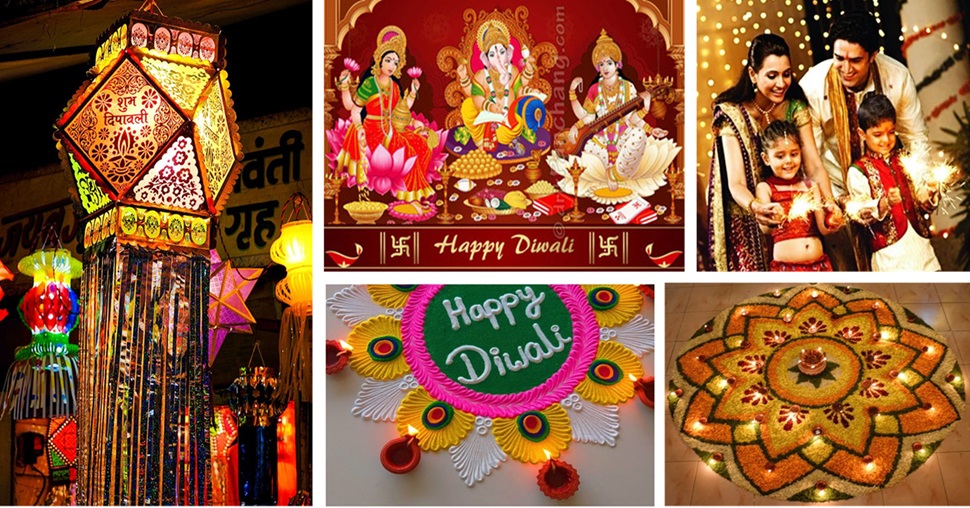
1. Ram Navami
Significance:
Ram Navami is the celebration of the birth of Lord Rama. It falls on the ninth day (Navami) of the Chaitra month in the Hindu calendar.
Observance:
Devotees observe fasts, visit temples dedicated to Lord Rama, recite hymns from the Ramayana, and participate in processions and satsangs (spiritual gatherings).
2. Vivaha Panchami
Significance:
Vivaha Panchami commemorates the wedding day of Lord Rama and Sita. It is observed on the fifth day (Panchami) of the Margashirsha month in the Hindu calendar.
Observance:
Devotees reenact the marriage ceremony of Rama and Sita in temples, and some people celebrate this day with great enthusiasm.
3. Hanuman Jayanti
Significance:
Hanuman Jayanti marks the birth of Lord Hanuman, a central character in the Ramayana and a devoted disciple of Lord Rama. It is celebrated on the full moon day of the Chaitra month.
Observance:
Devotees visit Hanuman temples, recite Hanuman Chalisa, and participate in processions to honor the mighty monkey god.
4. Dussehra (Vijayadashami)
Significance:
Dussehra symbolizes the victory of Lord Rama over the demon king Ravana, as narrated in the Ramayana. It marks the tenth day (Dashami) of the Ashwin month.
Observance:
Effigies of Ravana, Meghanada (Ravana’s son), and Kumbhakarna (Ravana’s brother) are burned in large public events called Ramlila. This symbolizes the triumph of good over evil.

Significance:
Diwali, the Festival of Lights, celebrates the return of Lord Rama to Ayodhya after his victory over Ravana. The people of Ayodhya lit lamps to welcome him home.
Observance:
Diwali is marked by the lighting of lamps, colorful rangoli, fireworks, and the exchange of gifts. It is a time for family gatherings, prayers, and festive meals.

Lord Rama And Hanuman In Ramayana
Lord Rama holds profound significance for Hanuman, making their relationship a central theme in Hindu devotion and mythology.
Lord Rama holds the highest place in Hanuman’s heart. Their relationship epitomizes the profound bond between devotee and deity, illustrating the transformative power of unwavering devotion and the path to spiritual realization. Hanuman’s devotion to Lord Rama continues to inspire countless individuals on their own spiritual journeys.
Hanuman, often referred to as Hanuman Ji or Bajrangbali, is an ardent devotee of Lord Rama, and this devotion embodies several significant aspects:
- Unwavering Devotion: Hanuman’s devotion to Lord Rama is unparalleled. He represents the ideal devotee who is completely dedicated and unwavering in his love and loyalty. Hanuman’s unwavering faith and service to Lord Rama are a source of inspiration for devotees striving to strengthen their own faith.
- Servant and Messenger: In the Ramayana, Hanuman plays a pivotal role in serving Lord Rama. He was entrusted with most important mission to search for Sita and deliver a message to Sita, who has been abducted by Ravana. For this reason he is also referred to as Ramduta (रामदूता).Hanuman’s heroic leap to Lanka and his subsequent interactions with Sita and the demon king Ravana are iconic events that highlight his devotion and valor.
- Symbol of Strength: Hanuman being Lord Shiva’s incarnation is blessed with many divine powers. He is known for his immense physical strength and extraordinary powers. This strength is dedicated to Lord Rama’s service. It symbolizes the strength that comes from unwavering devotion and the willingness to go to great lengths to serve one’s beloved deity.
- Exemplar of Humility: Despite his extraordinary abilities, Hanuman remains humble and always attributes his strength and success to Lord Rama. He embodies the value of humility, recognizing that all abilities and achievements are ultimately the blessings of the divine.
- Self-Realization: Hanuman is revered not only for his devotion but also for his deep spiritual understanding. He recognizes Rama as the Supreme Being and experiences oneness with the divine. Hanuman’s devotion to Rama is seen as a path to self-realization and spiritual enlightenment.
- Role Model for Devotees: Hanuman serves as a role model for devotees, teaching them the virtues of devotion, selfless service, and humility. His stories and teachings offer guidance for leading a life dedicated to the divine and embodying the qualities of a true devotee.
- Bhakti and Bhagavan: Hanuman’s relationship with Lord Rama exemplifies the essence of bhakti (devotion) in Hinduism. He is a Bhakta (devotee) who sees Rama as Bhagavan (the Supreme God). This devotional relationship is celebrated in Hanuman’s famous statement, “When I do not know who I am, I serve You. When I do know who I am, You and I are One.”
- Worship and Festivals: Hanuman is widely worshiped by devotees, and his images and temples can be found throughout India and other parts of the world. Hanuman Jayanti, the birthday of Hanuman, is a significant festival celebrated with devotion and fervor.
Ramayana FAQ - Frequently Asked Questions
The Ramayana is one of the two major Sanskrit epics of ancient India, the other being the Mahabharata. It is attributed to the sage Valmiki and is a foundational text in Hindu literature and philosophy.
The Ramayana is a narrative poem that consists of around 24,000 verses divided into seven books, also known as Kandas or Cantos. It tells the story of Lord Rama, his wife Sita, his loyal companion Hanuman, and the epic’s central theme revolves around dharma (moral and ethical duties).
The Ramayana is not just a narrative of historical events; it also imparts moral, ethical, and philosophical teachings. It explores themes such as the importance of dharma (righteousness), the role of duty and honour, the consequences of actions, and the power of devotion and virtue.
The Ramayana has had a profound influence on art, literature, and culture across South and Southeast Asia. It continues to be recited, performed, and studied in various forms, contributing to its enduring significance in Sanatana dharma Hindu tradition.
Hanuman is a Hindu god who is a divine vanara and supreme devotee of the Lord Rama. Lord Hanuman is eleventh avatar of Lord Shiva and his existence is experienced by his devotees as a jagrut dev ( living god ). Hanuman played a crucial role in epic Ramayana.
Hanuman (/ˈhʌnʊˌmɑːn/; Sanskrit: हनुमान्, IAST: Hanumān), also called Maruti (Sanskrit: मारुति), Bajrangabali (Sanskrit: बजरंगबली), and Anjaneya (Sanskrit: आञ्जनेय), and Pavanputra.
The name Balaji refers to Shri Hanuman in several parts of India because the childhood (Bala in Hindi or Sanskrit) form of the Lord is especially celebrated there. The temple is dedicated to Balaji (another name for Shree Hanuman Ji).
The term “Balaji” is often used as a title for Lord Hanuman, particularly in certain regions of India. “Balaji” translates to “the one who is a child” or “the youthful one.” This title is associated with Lord Hanuman due to his childhood exploits and unwavering devotion to Lord Rama.
The name “Balaji” is derived from two Sanskrit words:
- “Bala” (बाल): This means “child” or “youth.” It signifies the early years of Hanuman’s life when he exhibited exceptional strength, intelligence, and devotion even as a young monkey.
- “Ja” (ज): This is a suffix that can be added to a name, indicating “born of” or “generated from.”
In the case of Hanuman, it signifies that he is born of Lord Vayu (the wind god) and Anjana.
The title “Balaji” is an affectionate way of referring to Lord Hanuman, emphasizing his divine qualities from his youth. Hanuman is often depicted as a robust and powerful monkey god, and his youthful form is revered for its devotion, strength, and selfless service to Lord Rama.
It’s worth noting that while “Balaji” is commonly associated with Lord Hanuman, the term is also used as a title for Lord Venkateswara, a form of Lord Vishnu, particularly in the context of the Tirumala Venkateswara Temple in Tirupati, Andhra Pradesh. In this case, “Balaji” is a reference to Lord Venkateswara’s divine and charming child-like form.
Lord Hanuman is worshipped for Strength, Wisdom, Intelligence, Courage, Devotion , valor and Self-Discipline.

